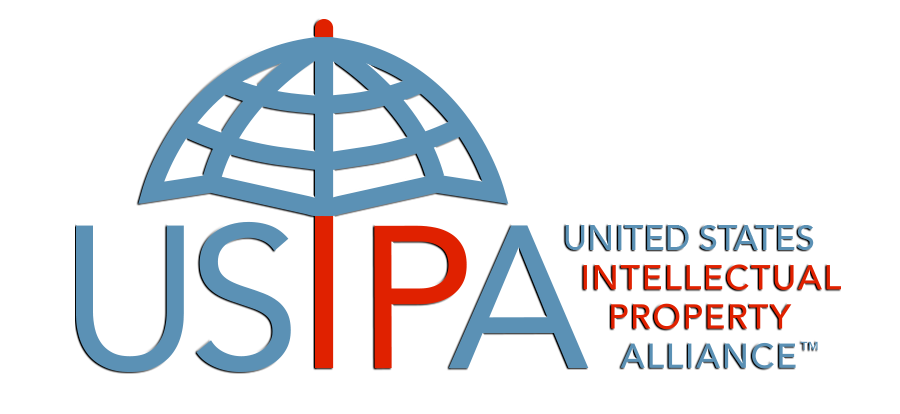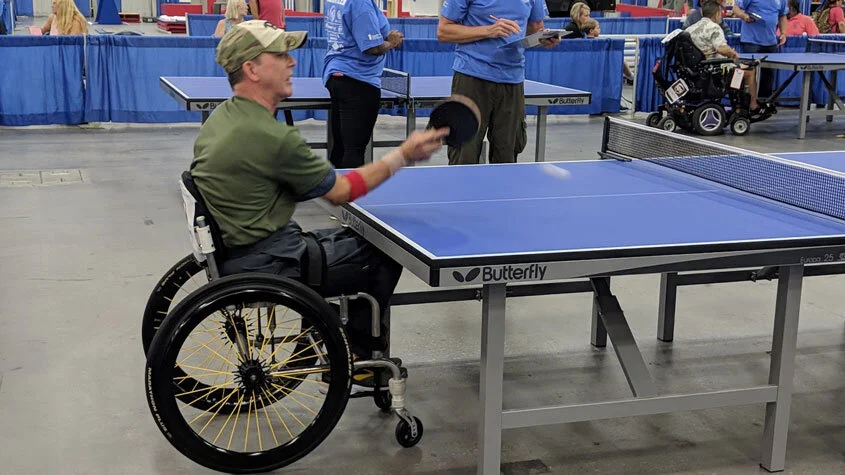Paralympian Rory Cooper drives innovation for people with disabilities
August 2021
Rory Cooper wins “gold” at the 2021 US National Veterans Wheelchair Games using the chair that he and his colleagues invented and built for the sport. (Photo: Courtesy of Rory Cooper)
By Kathryn Carrara, freelance writer for WIPO MAGAZINE
Dr. Rory Cooper is the founder and director of the Human Engineering Research Labs (HERL) at the University of Pittsburgh and Department of Veteran Affairs in the United States. From ergonomic push rims (a patented technology that reduces upper extremity pain and injury in wheelchair users) on wheelchairs to robots to assist with lifts and transfers, home automation and prosthetics, there’s no stopping Dr. Cooper – Paralympian, serial inventor, army veteran, engineer, marathon racer. Dr. Cooper discusses his ground-breaking work and the importance of intellectual property (IP) in bringing it to the market.
What exactly is human engineering?
Human engineering is a way to get technology and engineering involved in healthcare and community participation, and to remind everyone that people with disabilities are people. At HERL, we aim to improve the quality of life and participation of people with disabilities through engineering and technology.
When we started in 1994, people with disabilities were often not treated equally by society. We’re making progress. We use advanced engineering and research to improve the mobility and function of people with disabilities so they can fully contribute to and participate in society.
Participatory action design and engineering (PADE) is at the center of our work. People with disabilities are engaged in all aspects of our research, invention and innovation.
Rory Cooper wins “gold” at the 2021 US National Veterans Wheelchair Games using the chair that he and his colleagues invented and built for the sport. (Photo: Courtesy of Rory Cooper)
What are some key areas that need attention?
There is still a lot to do in relieving pressure injuries and in developing technology that allows people to live at home and to work. Home assistance systems and mainstream technologies are helping people with disabilities. Take my van. In the past, I would have had to modify it, but now most of the assistive aids I need are in place because today nearly everyone wants the convenience of opening doors at the push of a button. The mainstreaming of assistive technologies is a huge opportunity to create a more inclusive environment, and it's important for people with disabilities to create and influence these new technologies.
Are HERL's inventions taken up by industry?
Yes, once they are patented, a good number of our inventions are adopted by industry - we have a strong track record. HERL is a very diverse organization with many people with disabilities. We're well connected to the community nationally and worldwide. We work closely with people with disabilities to identify real issues they face and work with them to create solutions. Our priorities are based on user needs, our capabilities and the impact we can make.
In the 1990s, for example, we solved the cross brace breaking problem that had affected almost every manual wheelchair in the world. By sharing that technology royalty-free, millions of people were able to benefit from it.
Then there’s our Natural Fit and Surge push rim, the most successful ergonomic push rims in the world and one of the first to be commercialized. Around 300,000 of them have been sold, drastically reducing pain and injury among manual wheelchair users.
In the 1990s, we solved the cross-brace breaking problem that had affected almost every manual wheelchair in the world. By sharing that technology royalty-free, millions of people were able to benefit from it.
With our Virtual Seating Coach machine learning hardware and software, we chose a different path. We licensed it to a global company, Permobil. They integrated it into their range of power wheelchairs, which enabled them to differentiate their products from their competitors while also helping people with disabilities to manage the risk of developing pressure injuries or lymphedema (leg swelling).
Why is diversity important?
I am a strong proponent of diversity. Heterogeneity is the key to innovation. At HERL most people are from an underrepresented group within science, whether through disability or ethnicity, gender or culture.
Diversity is important because it offers various perspectives. If you have a diverse group working together, you can devise multiple options and solve problems that might not otherwise be possible.
Heterogeneity is the key to innovation.


